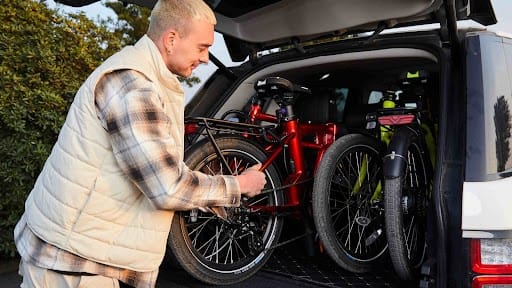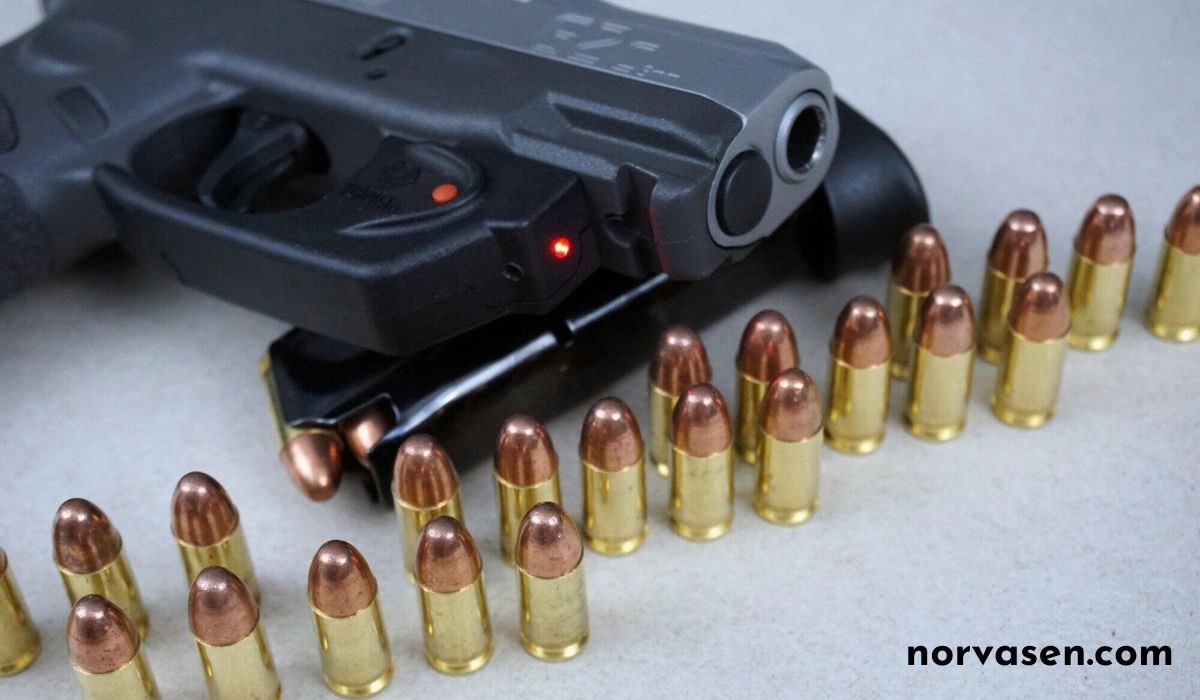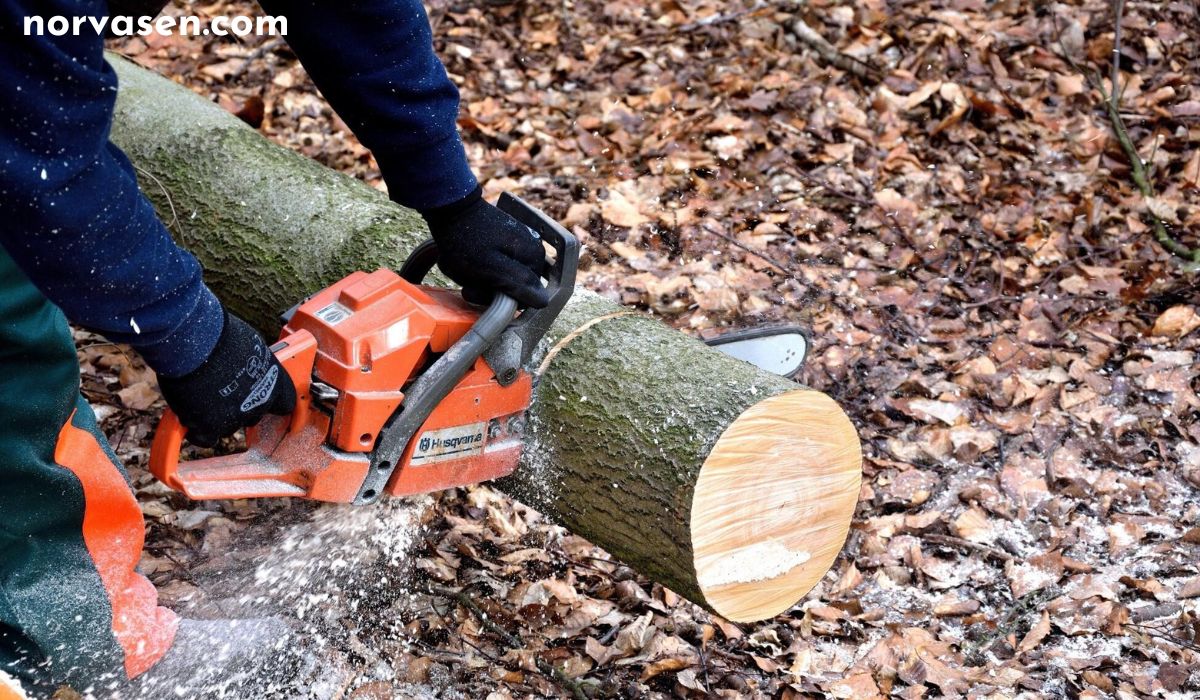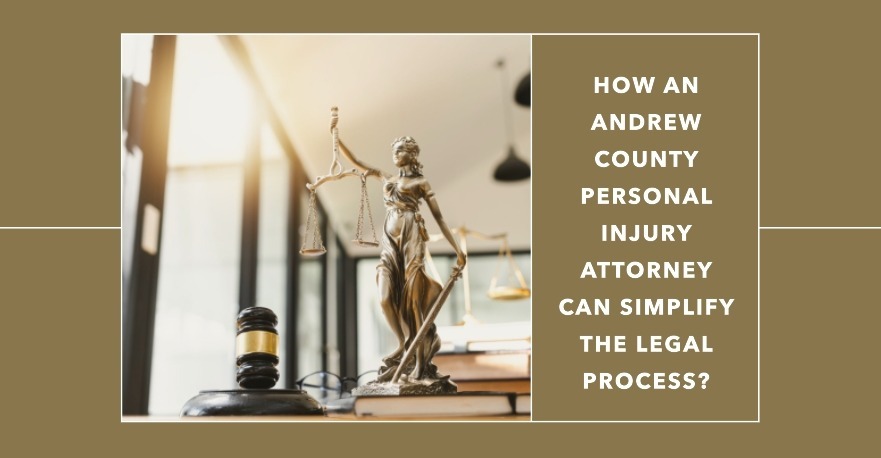Tech
What Size Electric Bicycle Do I Need?

Finding the perfect electric bike is all about an enjoyable ride, and a big part of that enjoyment comes down to getting the right e bike size.
A bike that’s too big can be cumbersome and leave you feeling stretched out, while a bike that’s too small can lead to cramped leg positioning and back pain. This means an e-bike that fits you well will provide optimal comfort, performance, and efficiency, reduce fatigue, and give you the confidence to explore further.
This guide will help you navigate the world of e-bike sizing, introduce you to the concept of foldable e-bikes with the Leoguar Flippo Foldable Electric Bike, and ultimately get you rolling on the right electric steed.
Key Factors in Selecting E-Bike Size
There are three main factors to consider when selecting the right e bike size:
- Rider Height and E-Bike Frame Size Relationship:
Generally, taller riders will need a larger frame size, while shorter riders will do better with a smaller frame. Most e-bike manufacturers will have a size chart that correlates rider height with recommended frame sizes.
Here’s a general road bike sizing chart to give you an idea about, what size electric bike do i need:
| Rider Height | Inseam | Frame Size (cm) | Inches |
| 4’10” – 5’1″ | 25.5” – 27” | 46 – 48 | 18-19 |
| 5’0″ – 5’3″ | 26.5″ – 28″ | 48 – 50 | 19-19.5 |
| 5’2″ – 5’5″ | 27.5″ – 29″ | 50 – 52 | 19-20.5 |
| 5’4″ – 5’7″ | 28.5″ – 30″ | 52 – 54 | 19.5-21 |
| 5’6″ – 5’9″ | 29.5″ – 31″ | 54 – 56 | 21.5-22 |
| 5’8″ – 5’11” | 30.5″ – 32″ | 56 – 58 | 22.5-23 |
| 5’10” – 6’1″ | 31.5″ – 33″ | 58 – 60 | 23.5-24 |
| 6’0″ – 6’3″ | 32.5″ – 34″ | 60 – 62 | 24.5-25 |
| 6’2″ – 6’5″ | 34.5″ – 36″ | 62 – 64 | 24.5-25 |
Remember, different manufacturers may have different e bike size ranges, thus, ways refer to the specific size chart provided by the e-bike manufacturer to ensure a proper fit.
- Importance of Inseam Length:
Inseam length, the measurement from the uppermost part of your thigh to the bottom of your leg, is crucial for determining the appropriate stand-over height of a bike. The bike stand over height should be a few inches shorter than your inseam to ensure comfortable and safe mounting and dismounting.
For the best ebike for short female riders, a lower bike stand over height is essential to ensure easy access and control and prevent any discomfort.
- Reach and Stack: Why They Matter:
Reach refers to the horizontal distance from the saddle to the handlebars, while stack refers to the vertical distance or the height of the handlebars. The ideal reach and stack depend on your riding preferences and desired comfort level.
For a more upright riding position, a shorter reach and higher stack are preferred. Conversely, a more aggressive riding position, which might be desired for performance or speed, requires a longer reach and lower stack, positioning the rider lower and more aerodynamically.
Ensuring the correct reach and stack measurements prevents discomfort or strain, allowing for a more enjoyable and sustainable riding experience.
Advantages of Foldable E-Bikes in Sizing
Foldable e-bikes offer some unique advantages when it comes to sizing:
- Adjustable Seats: Many foldable bikes have adjustable seat posts that allow for a wider range of rider heights to find a comfortable fit.
- Compact Storage: When folded, these bikes take up much less space, making them ideal for apartments or those with limited storage options.
- Portability: The foldable design makes it easier to transport your e-bike on public transportation, in the trunk of your car, or RV.
- Versatility: Foldable e-bikes are mostly suitable for various types of commutes and travel.
How the Leoguar Flippo Compact Electric Bike Adapts to Various Rider Sizes:
The Leoguar Flippo Foldable Electric Bike is designed with adaptability in mind. It features adjustable components, such as the seat and handlebars, allowing it to accommodate riders from 5’3″ to 6’5″ and support a maximum payload of 232 lbs. This makes the Flippo a versatile option for a wide range of riders.
The adjustable seat post and upright riding position enhance its appeal, ensuring comfort for riders of various shapes and sizes. Its wide recommended rider height range makes it a particularly good choice for those seeking a comfortable and easy-to-store e-bike.
While non-foldable e-bikes may offer a greater variety of frame sizes, foldable e-bikes like the Flippo compensate with adjustable features that provide a good fit for a broader range of riders.
Detailed Look at the Flippo Foldable Electric Bike
- Frame and Adjustability Features:
The Flippo boasts a lightweight and durable 6061 aluminum alloy frames, known for its strength and resilience. A key feature enhancing its adaptability is the adjustable seat post, allowing riders of various heights to achieve comfortable leg extension while pedaling.
- Storage and Portability:
One of the standout features of the Flippo is its foldable design. When folded, it measures 25.4″ x 19″ x 30″, roughly the size of a small suitcase, making it perfect for carrying in cars and especially convenient for RV travelers. This compact ebike size is ideal for those with limited storage space or those who need the convenience of easily transporting their e-bike.
The Flippo also has a flexible folding handle, ensuring a smooth and effortless folding and unfolding process. Its 3×3.5″ foldable pedals further simplify storage, minimizing space when the bike is folded. These pedals easily fit into car trunks, under desks, or in small apartment closets, making the Flippo ideal for urban living.
Its portability also means it can be taken on public transportation without hassle, adding to its versatility for daily commuters.
Practical Tips for Testing E-Bike Fit
Even with all this information, the best way to ensure a good fit is to take an e-bike for a test ride. Here are some tips to get the most out of your test ride:
How to Properly Test Ride an E-Bike:
1. Inseam Measurement:
- Stand against a wall wearing your cycling shoes, with feet 6” apart.
- Place a book (or similar object) between your legs as if you’re sitting on a saddle.
- Mark the top of the book.
- Measure the distance from the top of the book to the floor; this is your inseam measurement.
2. Stand-Over Height:
- Stand in the center of the bike frame with feet flat on the ground and cycling shoes on.
- Measure the clearance between your inseam and the top tube.
- For city bikes, a 1” clearance is sufficient.
- For E-MTBs, a minimum of 2” is recommended.
- Cruiser electric bikes for adults typically don’t require a bike standover height measurement.
3. Overall Height:
- Stand against a wall with feet flat on the ground, barefoot.
- Measure the distance from the top of your head to the ground using a tape measure or yardstick, asking for assistance if needed.
4. Check Arm and Leg Extension:
- Sit on the bike and reach for the handlebars. Your arms should slightly bend, not be completely straight or stretched out.
- While pedaling, your legs should have a slight bend at the knee at the bottom of the pedal stroke.
5. Ride for a Few Minutes:
- Take the bike for a short ride to see how it feels overall.
- Pay attention to any discomfort in your back, neck, or shoulders.
What to Look for in E-Bike Comfort and Ergonomics:
An e-bike that fits you well should feel comfortable and balanced. Thus, many e-bikes allow for some adjustments to improve the fit. These adjustments may include:
- Seat Height: As mentioned earlier, the seat height should allow you to comfortably touch the ground with the balls of your feet.
- Handlebar Angle and Height: Some e-bikes allow for adjusting the angle and height of the handlebars to improve comfort and reach.
- Stem Length: The stem is the component that connects the handlebars to the fork. A shorter stem will bring the handlebars closer to you, while a longer stem will push them further away.
- Suspension Settings: If available, adjust for a smoother ride based on your weight and riding style.
Conclusion
Choosing the right ebike size is an important step in ensuring a safe and enjoyable riding experience. By considering your height, inseam length, desired riding style, etc., you can narrow down your options.
Remember, a test ride is always the best way to confirm a good fit. So, get out there, try some e-bikes, and find the perfect ebike size for your electric adventure.
Tech
Exploring the Different Types of Pistol Brass: Which is Best for You?

Have you ever wondered how the type of pistol brass you choose can impact your shooting experience?
With so many options available, picking the right brass can feel overwhelming. Whether you’re a seasoned shooter or just starting out, understanding the differences in pistol brass is essential for improving accuracy, performance, and reloading efficiency.
In this article, we’ll break down the various types of the top reloading brass, helping you make an informed decision for your next purchase and ensuring you get the most out of your shooting sessions.
Full Metal Jacket (FMJ)
Full Metal Jacket (FMJ) bullets are one of the most common types of ammunition used in shooting. They consist of a soft lead core encased in a harder metal shell, usually copper. This design helps the bullet maintain its shape during flight and when it impacts a target.
FMJ bullets are often preferred for target shooting and training due to their reliability and increased feed efficiency in semi-automatic pistols. However, they may not expand upon impact, limiting their effectiveness for self-defense situations. If you’re using a 5.7 x28 brass caliber, FMJ brass can provide consistent performance and accuracy.
Hollow Point (HP)
The purpose of Hollow Point (HP) bullets is clear: to grow when they hit something. This growth makes a bigger wound path, which can make the bullet more effective at stopping. Because it can stop a danger more quickly than other types of bullets, Hollow Point ammo is frequently used in self-defense situations.
Hollow Point bullets work well for self-defense, but they might not be the best choice for practicing shooting at targets. They usually cost more than Full Metal Jacket bullets, which makes them less cost-effective for daily training.
Soft Point (SP)
The core of a Soft Point (SP) bullet is made of soft lead, which can be seen on the tip. Like a Hollow Point, this design lets the bullet spread when it hits something, but it does so in a different way. A lot of people use Soft Point ammo for hunting and sport shooting because it can make a big wound opening and still go deeper than Hollow Point bullets.
Soft Point bullets do a good job of expanding, but they aren’t usually the best choice for self-defense. If you want a bullet that works well in a lot of different scenarios, these might be a good choice.
Ballistic Tip
Ballistic Tip (BT) bullets have a polymer tip that makes them more efficient. This makes them more accurate and stable while they’re in the air. Like a Hollow Point bullet, this tip often helps the bullet start to expand when it hits something. Ballistic Tip ammo is often used for shooting because it has a high speed and transfers energy well, making sure a clean kill quickly.
These bullets are made to work well at different ranges, so you can use them in a variety of shooting settings. Ballistic Tip bullets work well for shooting, but because of how they are made, they might not be the best choice for self-defense.
Jacketed Hollow Point (JHP)
Bullets with a Jacketed Hollow Point (JHP) design have parts of both Full Metal Jacket and Hollow Point designs. They have a heart of lead and a jacket of metal around it. The metal helps them penetrate better while still letting them expand when they hit something. Because of how it’s made, JHP ammo can be used for self-defense because it’s meant to stop without going too deep.
JHP bullets are popular with both police and people who want to protect themselves. For defense, they are often used because they are solid in guns and work well when it comes to expanding.
Copper Plated
Copper Plated bullets have a core of lead that is covered in copper. This copper covering protects better against barrel wear and fouling, which can happen when you shoot. In semi-automatic handguns, the finish on the surface also makes it easier for the bullets to feed.
People often use these bullets for target shooting and some competitive shooting situations. In addition to dependable performance, they make shots easier and cleaner.
Lead
Lead bullets are made entirely from lead, a heavy and malleable metal. They are commonly used for target shooting and training purposes. Lead ammunition is cost-effective and offers a variety of shapes for different shooting needs.
However, lead bullets can leave residue in the firearm’s barrel, leading to increased cleaning requirements. Additionally, some shooting ranges may have restrictions on the use of lead due to environmental concerns.
Frangible
Frangible bullets are designed to break apart upon impact with a target. This design minimizes the risk of over-penetration, making them safer for use in training environments and law enforcement scenarios. They are often made from compressed materials that disintegrate on impact, providing a controlled performance.
Frangible ammunition is typically used in indoor ranges and situations where ricochet risks must be reduced. Their ability to fragment into small pieces helps to enhance safety for both shooters and bystanders.
Steel
Steel bullets are often used in specific shooting applications due to their durability and cost-effectiveness. These bullets provide good performance in various scenarios, particularly when a lower-cost option is needed. They are typically heavier than other bullet types and can penetrate targets effectively.
However, using steel bullets may require caution as they can lead to increased wear on the firearm’s barrel. Some shooting ranges have restrictions on steel ammunition because it can be more damaging compared to lead or copper-plated options.
Nickel-Plated
Nickel-plated bullets have a small layer of nickel on them, which helps shooters in a number of ways. This coating helps cut down on friction while firing, which makes the bullets in semi-automatic handguns more reliable.
It’s possible to use these bullets for both target shooting and self-defense. Nickel-plated ammo is liked by many shooters because it doesn’t foul as easily and feeds smoothly.
Pistol Brass Unveiled Find the Best Fit for Your Firearm
In conclusion, selecting the right pistol brass is crucial for enhancing your shooting experience. Each type of ammunition serves its unique purpose, whether for training, hunting, or personal defense.
Understanding the differences will help you make informed decisions based on your specific needs. By matching your reloading supplies to your shooting style, you can improve accuracy, performance, and ultimately enjoy your time at the range or in the field even more.
We hope this article was helpful to you. If you enjoyed it, be sure to check out our blog for more valuable information and resources.
Tech
Breaking Down the Different Types of Chainsaw Accessories and Their Uses

Chainsaws are powerful tools essential for a variety of tasks, from cutting firewood to felling trees. But to get the most out of your chainsaw, you need the right accessories.
Whether you’re a professional lumberjack or a weekend warrior, understanding the different types of chainsaw accessories and their uses can help you work more efficiently and safely.
Chainsaw Bars and Chains
Chainsaw bars and chains are crucial components of your chainsaw. The bar is the metal arm that guides the chain as it cuts through wood. Chainsaw bars come in various lengths, which can affect how deep or wide you can cut. The chain itself is made up of sharp teeth that slice through the material.
Different types of chains are designed for specific tasks, such as pruning or felling trees. Using the right combination of chainsaw bars and chains can improve your cutting performance and make your job easier. It is important to regularly check and maintain these parts for safety and efficiency.
Chain Sharpeners
Chain sharpeners are vital accessory types that help keep your chainsaw cutting efficiently. A dull chain can slow you down and make cutting more difficult. Chain sharpeners come in various forms, including manual files, electric sharpeners, and guide tools.
Using a sharpener is simple and can extend the life of your chainsaw chain. Regularly sharpening your chain will not only enhance your cutting performance but also ensure safer operation. Make it a habit to check your chain’s sharpness before starting any job to get the best results.
Safety Gear
Safety gear is essential when using a chainsaw. It protects you from injuries that can happen while cutting. Key items include a hard hat, goggles, ear protection, and gloves. These pieces of equipment help shield your head, eyes, ears, and hands from sawdust and flying debris.
Additionally, wearing chainsaw chaps can protect your legs from accidental cuts. It’s important to invest in high-quality safety gear to stay safe while working. Remember, the right safety equipment is just as important as tool enhancements for your chainsaw. Always check your gear before you start cutting to ensure you are fully protected.
Chainsaw Cases and Bags
Chainsaw cases and bags are important for protecting your equipment. They help keep your chainsaw safe during storage and transport. A good case prevents damage from bumps and moisture. It also keeps your tools organized and easily accessible.
Many cases offer extra pockets for storing accessories, like chains and sharpeners. When choosing a case or bag, look for durable materials that can withstand wear and tear.
This investment will help extend the life of your chainsaw and make carrying it easier. Always store your chainsaw in its case when you’re not using it to keep it in top condition.
Chainsaw Oils
Chainsaw oils are essential for keeping your tool running smoothly. They help lubricate the chain and bar, reducing friction during operation. Using the right oil prevents overheating and wear on your chainsaw parts.
It is important to choose oils specifically designed for chainsaws, as they provide the best performance. Always check your oil level before starting work to ensure proper lubrication and efficiency.
Learn All About Chainsaw Accessories
In conclusion, having the right chainsaw accessories helps a lot. They make your work easier and safer. Make sure you have good bars, chains, and sharpeners. Always wear safety gear to protect yourself.
Store your chainsaw in a case to keep it safe. Taking care of your tools helps them last longer. With the right accessories and care, you can do your cutting tasks well.
Tech
How an Andrew County Personal Injury Attorney Can Simplify the Legal Process?

An Andrew County personal injury attorney can simplify the complex legal process by protecting your rights, negotiating with insurance companies on your behalf, thoroughly gathering critical evidence, and providing skilled representation in court. They’ll handle the tedious paperwork, legal filings, and negotiations to maximize the compensation you recover for your injuries and losses.
With an attorney guiding you, you can focus on your recovery while they work tirelessly to guarantee you receive the full compensation you’re entitled to under the law. To learn more about how an attorney can help with your specific case, continue reading.
Key Takeaways
- Navigating the complex legal procedures and paperwork on behalf of the client.
- Handling communication and negotiations with insurance companies to maximize compensation.
- Gathering and organizing all necessary evidence and documentation to build a strong case.
- Providing knowledgeable guidance through each step of the legal process.
- Advocating aggressively in court proceedings to ensure the client’s rights are protected.
Understanding Your Legal Rights
As an individual who’s suffered a personal injury, it’s crucial to understand your legal rights. You have the right to seek compensation for any damages or losses you’ve incurred due to the negligent actions of another party. This includes medical expenses, lost wages, pain and suffering, and any other financial or emotional burdens you’ve faced as a result of the incident.
By working with an experienced Andrew County personal injury attorney, you can ensure that your rights are protected and that you receive the full compensation you’re entitled to. Your attorney will thoroughly investigate the accident, gather evidence, and negotiate with insurance companies on your behalf to secure the best possible outcome for your case.
Don’t let the complexities of the legal system deter you from seeking justice. With the appropriate legal representation, you can navigate the process with confidence and focus on your recovery, while your attorney handles the legal matters on your behalf.
Navigating Insurance Company Negotiations
When dealing with insurance companies after a personal injury, you’ll need to navigate the negotiation process carefully. Insurance adjusters may try to minimize your claim or pressure you into accepting a settlement that doesn’t fully cover your losses. That’s why working with an experienced Andrew County personal injury attorney is so important.
Your attorney will handle all communication with the insurance company on your behalf, ensuring your rights are protected. They’ll review the details of your case, gather evidence, and calculate the full extent of your damages, including medical expenses, lost wages, and pain and suffering.
With your attorney’s guidance, you can negotiate effectively to secure a fair settlement that covers all your needs.
Your attorney will also be prepared to take your case to court if the insurance company refuses to offer a reasonable settlement. This can give you the leverage you need to get the compensation you deserve.
Don’t face the insurance companies alone – let an experienced personal injury lawyer simplify the process and fight for your rights.
Gathering Necessary Evidence and Documentation
In order to build a strong personal injury case, you’ll need to gather essential evidence and documentation from the start. This includes obtaining copies of medical records, bills, and receipts related to your injuries and treatment. You should also collect any police reports, witness statements, or other documentation that could support your claim.
Documenting the full extent of your injuries and the associated costs is vital. This means tracking all your medical expenses, including those for doctor visits, hospital stays, rehabilitation, and any assistive devices you may have needed. Gathering this paperwork can be time-consuming, but it’s necessary to demonstrate the impact of the accident on your life.
Your personal injury attorney can help you navigate this process and ensure you have all the necessary information to build a compelling case. They’ll know what evidence is most important and how to obtain it efficiently. With their guidance, you can focus on your recovery while they handle the legal complexities on your behalf.
Representing You in Court Proceedings
Your personal injury attorney will represent you throughout the court proceedings, ensuring your rights are protected and your case is presented effectively. They’ll handle all the legal filings, negotiations, and courtroom arguments on your behalf, allowing you to focus on your recovery.
Your attorney will work closely with you to develop a strong legal strategy, drawing on their expertise and experience to build a compelling case. They’ll gather and present all relevant evidence, question witnesses, and challenge any opposing arguments. Their goal is to secure the maximum compensation you’re entitled to for your injuries, lost wages, and other damages.
Throughout the court process, your attorney will keep you informed every step of the way, explaining the proceedings and guiding you through any decisions that need to be made. They’ll negotiate with the insurance company or opposing party on your behalf, endeavoring to reach a favorable settlement if possible.
If the case goes to trial, you can count on your attorney to provide skilled and zealous representation in the courtroom.
Maximizing Your Compensation Recovery
Securing the utmost compensation you deserve is a top priority for your personal injury attorney. They’ll meticulously document all your losses, from medical expenses and lost wages to pain and suffering, to build a strong case for the full extent of your damages.
With their deep understanding of personal injury law, they’ll negotiate aggressively with the insurance company to guarantee you receive the maximum settlement possible.
They won’t settle for anything less than what you’re rightfully owed. Your attorney will work tirelessly to maximize your recovery, leveraging their expertise to overcome any attempts by the insurance company to lowball or deny your claim.
They’ll handle all the complex legal paperwork and negotiations, so you can focus on your recovery while they fight to get you the compensation you need to move forward.
With your personal injury attorney in your corner, you can rest assured that your financial well-being is their highest priority.
Conclusion
When you work with an Andrew County personal injury attorney, they’ll simplify the legal process by handling all the complex paperwork and negotiations on your behalf. For instance, after a car accident, your attorney will gather the necessary evidence, deal with the insurance companies, and represent you in court to guarantee you receive the maximum compensation you’re entitled to. With their expertise, you can focus on your recovery while they fight for your rights.
-

 Tech5 months ago
Tech5 months agoExploring the Features of Innocams: The Future of Security
-

 Home Improvement3 months ago
Home Improvement3 months agoEco-Friendly Round Rug Options for Sustainable Living in NZ
-

 How-To Guides2 months ago
How-To Guides2 months agoComprehensive Guide to Cockwarming: Enhancing Intimacy and Connection
-

 Fashion3 months ago
Fashion3 months agoBlack Magic: The Elegance and Sophistication of Ultimate Homecoming Dresses in Black
-

 Apps and Games3 months ago
Apps and Games3 months agoDiscover Tickzoo: The Ultimate Platform for Video Content Lovers and Creators
-

 Business5 months ago
Business5 months agoUnlock Potential: Explore Pikruos Services
-

 Blog3 weeks ago
Blog3 weeks agoPossiblyethereal: Exploring the Ethereal Unveiling Abstract Ideas
-

 Entertainment4 months ago
Entertainment4 months agoDiving into the Audio-Visual Experience with AV Tub: Innovating Our World of Media
















